
A Startup Concept: SquadUp Gaming
Timeline: October-December 2021
In a startup studio in fall 2021, I learned how to take a concept from ideation to launch. My startup team, by the name of “Gen Z Suppliers”, wanted to explore the gaming space. From online discussions and personal experiences, we observed that many gamers have a hard time making genuine connections with others, because negativity is often normalized in these gaming environments. We wanted to explore solutions in which we could better connect the gaming community. Our startup concept is centered around an entertainment service that aims to help disconnected gamers find positive and safe gaming experiences, meaningful gaming groups and communities, and other gamers on the same level of mastery.
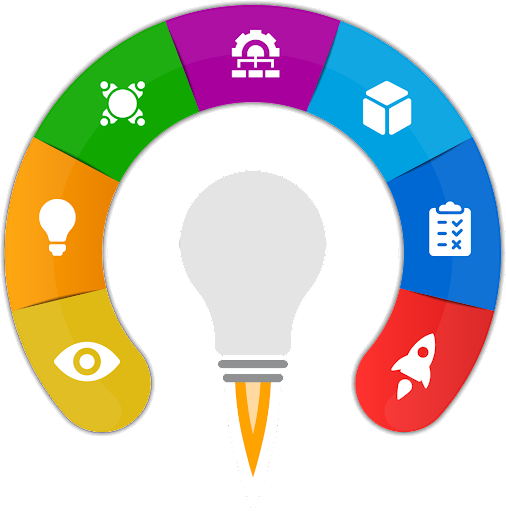
Problem Statement
How might we connect gamers looking for new communities and teammates so that we can provide them with a fun and safe online experience.
Research: Community Engagement and Experiences
According to the Entertainment Software Association, players tend to take great pride, often using their rank as a status symbol. Dominance hierarchies are common within groups of ranked players, which tend to turn negative in a lot of instances.
On many online platforms, like Reddit, gamers have expressed reasons on why they leave the gaming community due to toxicity, sexism, racism, and different types of harassment. Toxic players have been a big issue for a long time, and it's prevalent in almost every entertainment-related community, but especially online gaming.
" For 2020, 81 percent of U.S. adults aged 18-45 who played online multiplayer games experienced some form of harassment, an increase from the figure of 74 percent reported in the 2019 survey."
- ADL 2020Surprisingly, studies show that a large proportion of individuals playing multiplayer games are experiencing many different forms of abuse from other gamers. We noticed that since there is a lack of attention to these specific issues, individuals are experiencing more loneliness and anxiety in the gaming community. We aim to design a service that will help narrow this gap and increase the psychological safety between gamers.
Design Goals & Implications
Although there are other similar platforms that separately offer gamers a way to find teammates, create tournaments, or search for communities, we have yet to find one platform that combines all of these together. With this visible lack in the community, we aim to find a solution and better the gaming industry.
We started with identifying the possible circumstances and desires of our audience, gamers who want to become more connected with other gamers and find fun and safe online experiences. We looked at potential elements our startup will need in social, economic, and technological aspects.
- Creating a safer gaming environment that helps mitigate the large amount of toxicity in the gaming community
- The desire for social interaction with like-minded people
- Free access to everyone with internet access
- Options to pay for more services and features
- Algorithm/filter system that puts gamers into categories based on their level of mastery and type of game
- Dynamic, online platform
User Needs & Industry Research
Personas
Based on our research on gamer communities, the three personas we wanted to focus on were casual, minority, and professional gamers. We wanted to reach a variety of audiences who want to play video games for fun but may also want to build and play against strong teams.



Competitive Analysis
We analyzed the top features of several third party applications for communicating with and finding other gamers. As for features, we looked at each application and any features like matchup, tournaments, or profile personalization.
In these competitors, we saw the features that stood out, were overlooked, and possible combinations we could expand on in our application. In summary, there was no one application that combined all of the aspects needed to facilitate team matchmaking. To connect with other gamers in a positive and meaningful way, our target audience needs robust, effective, and intuitive tools to navigate the team matchmaking process. We also wanted to heavily consider the ways to preserve the longevity needed for healthy teams but also give users a way to leave and report groups that foster unhealthy dynamics. By doing so, we can provide them with a multitude of services while also fueling their gaming ambitions.
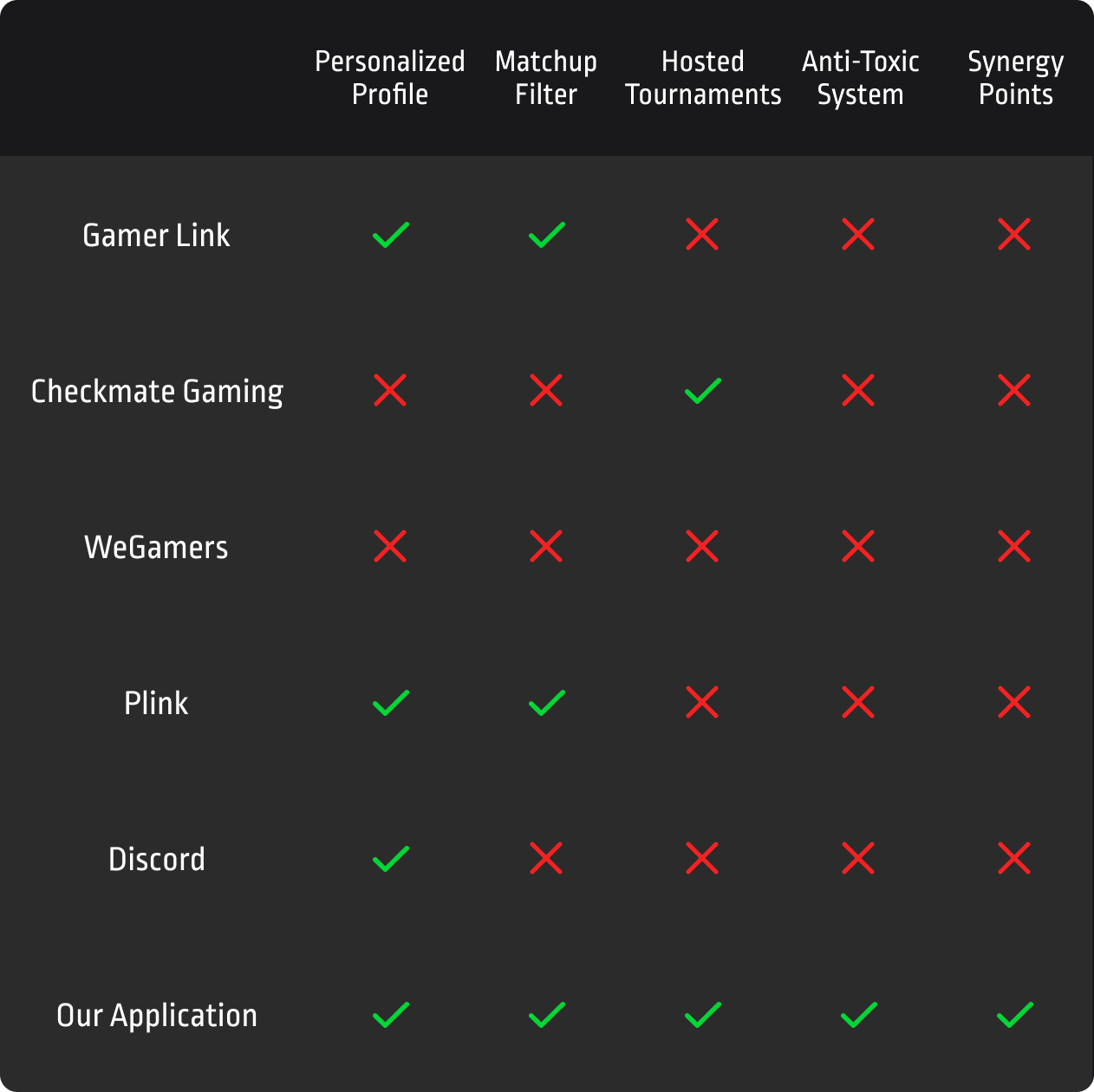
Design Ideation
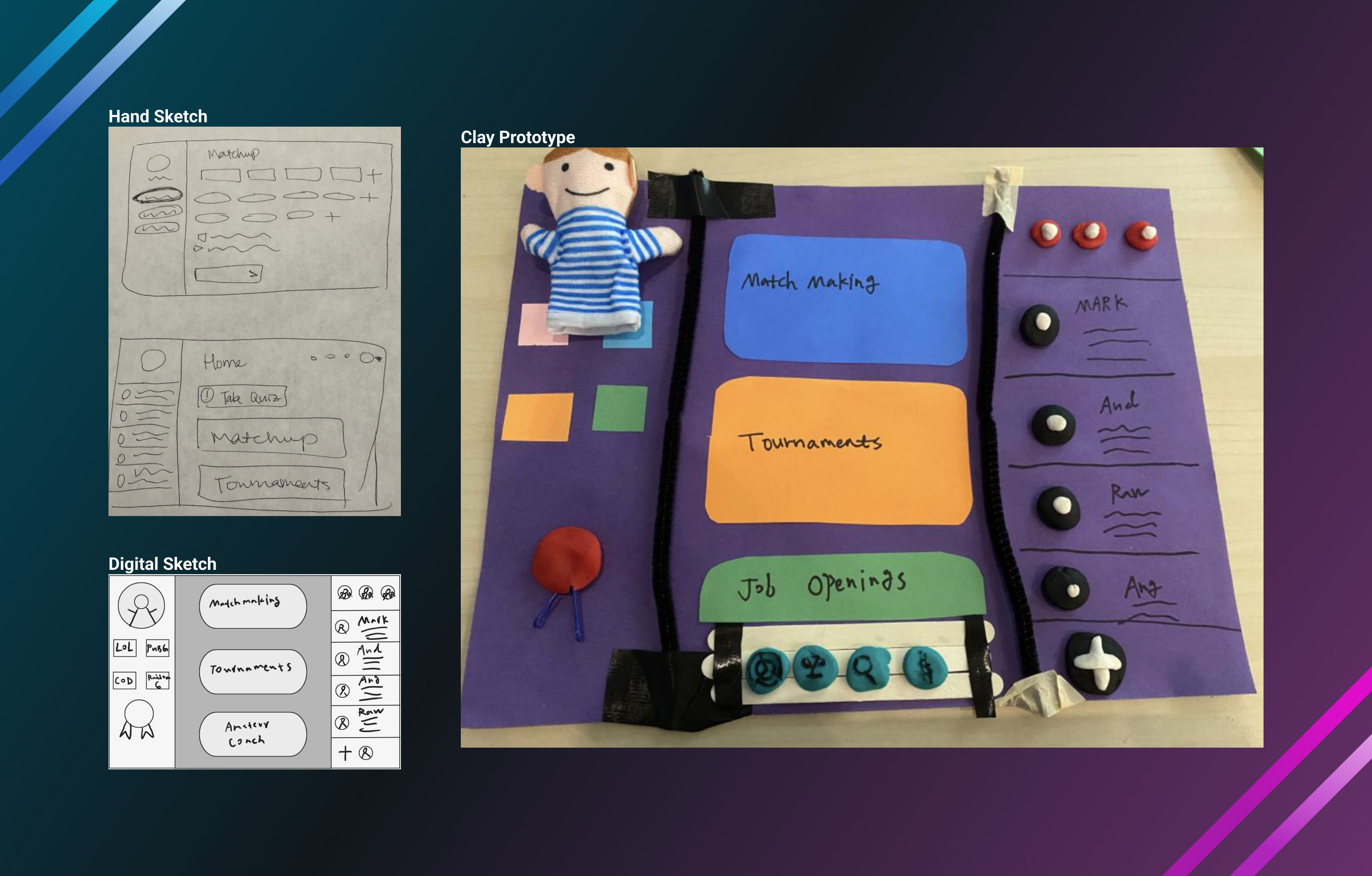
Sketches & Low-Fi
During a brainstorming session, we sketched our application to fit user needs and industry standards. From those sketches, we handcrafted a prototype with clay, paper, and other materials to make a physical version so that our peers could interact and give quick feedback on their experience. During the user testing session, we explained the basic concept of our application and then allowed users to “click” on the center buttons to activate panels that overlaid the base, to simulate the changing of pages.
Users liked the simplicity of the interface and its navigation. They gave feedback on the layout, naming, and features for each of the main categories: matchmaking, tournaments, and coaching. After analyzing the feedback, we moved to the final stages of prototyping.
Final Mockup Designs
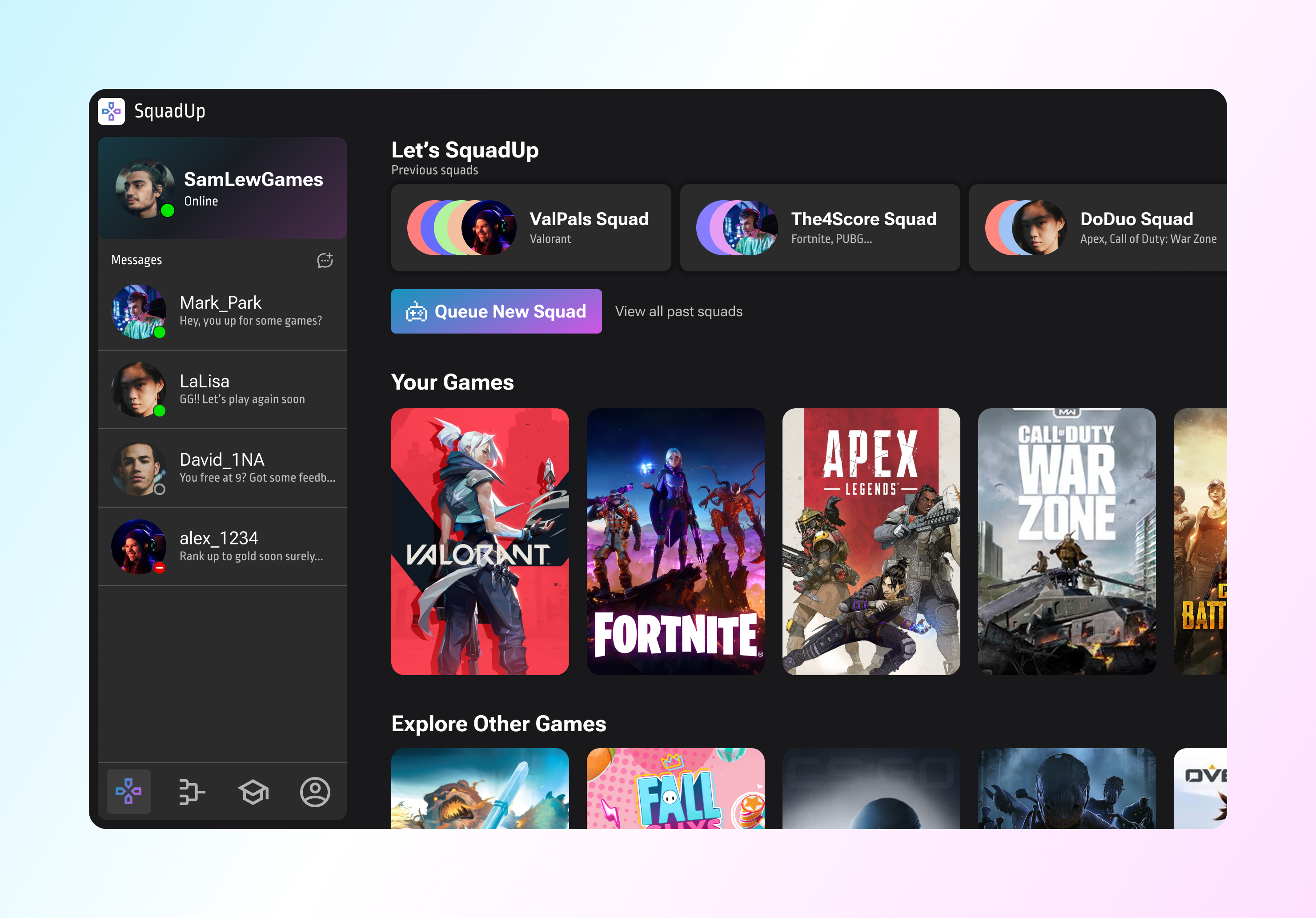
Based on the user feedback we received on our low fidelity wireframes and sketches, we decided to use similar layouts to competitor platforms to ensure an intuitive user interface.
We kept the three categories - matchmaking, tournaments, and coaching - that can be accessed on the navigation bar. Profiles will have user-inputed tags and interests before matching. To ensure that the platform would be utilized by a large number of users, the application includes multiple genres and types of multiplayer games to reach a broad spectrum of users.
My role in this stage was to create the design system and lead as the primary designer, creating the final mockups in Figma.
Matchmaking
Within our matchmaking feature, we wanted to keep it simple and streamlined. Based on tags and interests, the user would be able to choose what games they want to play and the playstyle they are looking for. After entering the team requirements, the user would be matched into groups that have similar interests and goals to maximize success, which would be measured by teams having positive and meaningful experiences. Once matched, users can immediately interact with their new teammates through text or voice. In cases where the atmosphere is toxic or not a match, they could also use the page controls to leave and/or report the group or any of its members.
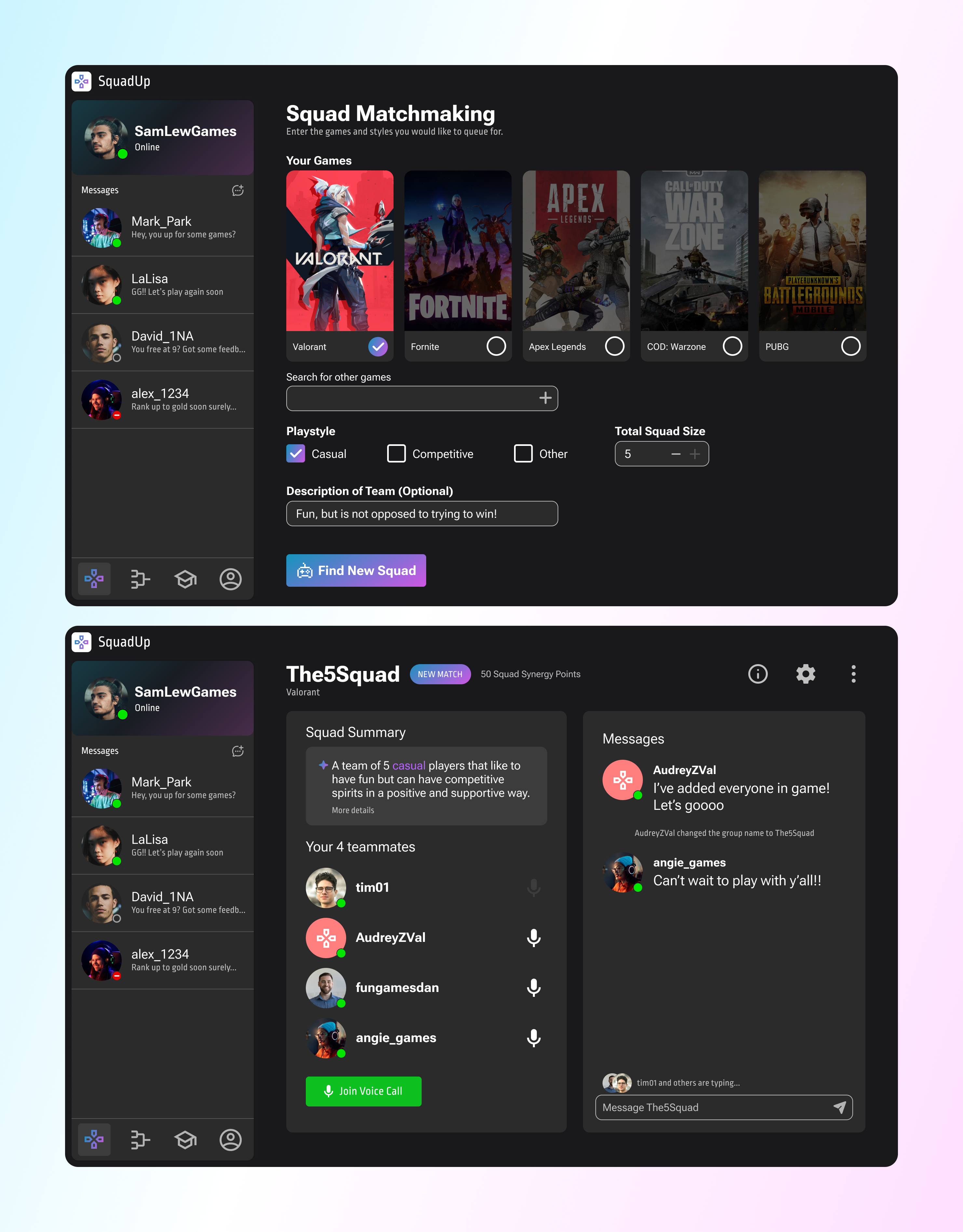
Tournaments
The tournament page contains a list of community-hosted tournaments and competitions that your teams could participate in. By having visible fields like tags, skill levels, and team sizes, users can quickly scan the available options and select which challenge or tournament fits their teams the most. This feature aims to increase team synergy, and participation will yield Squad Synergy points.
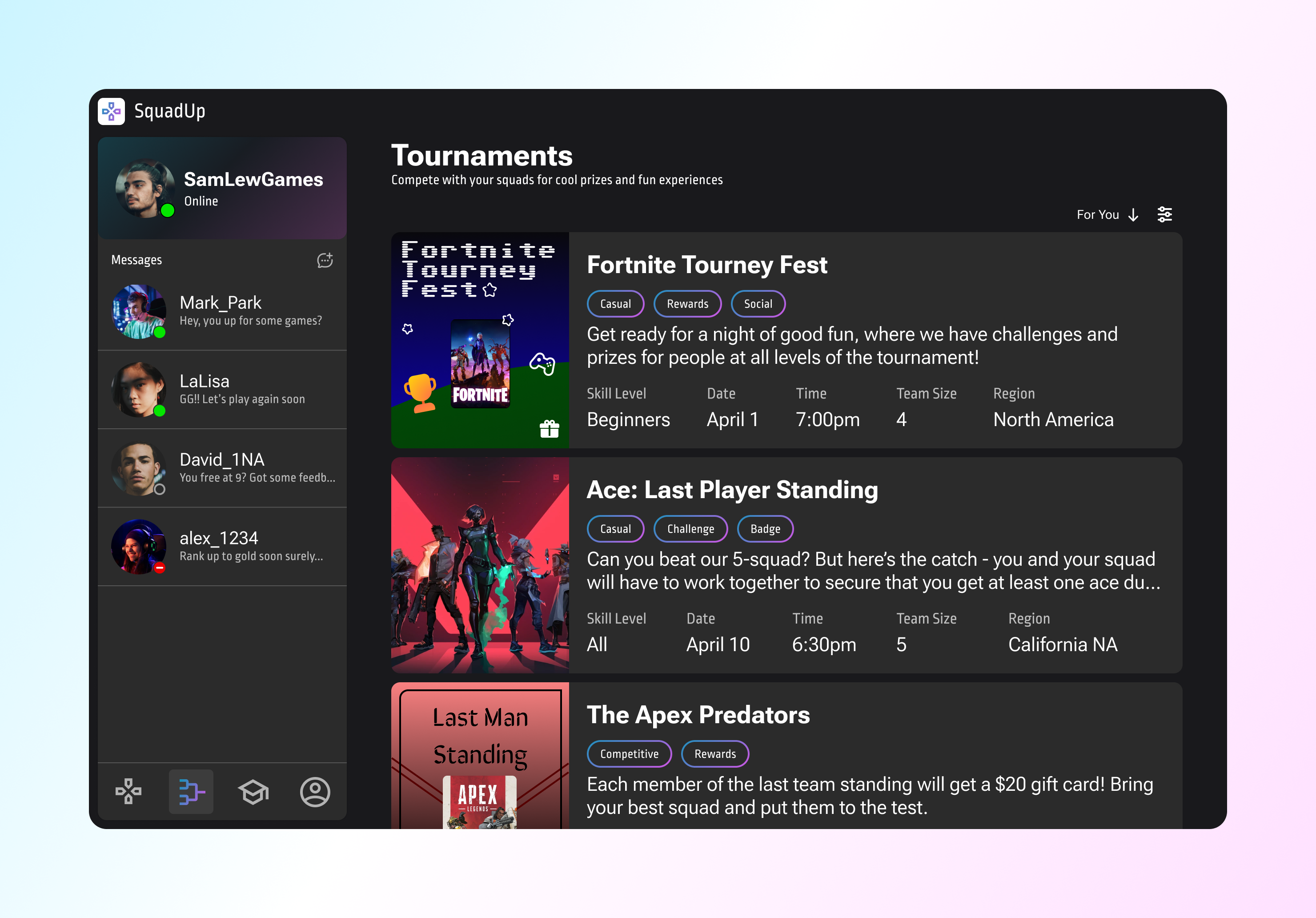
Coaching
Similar to the tournaments page, this feature shows a list of the different coaches available, the different available games they coach for, and details for the service. Coaching can be local or online and would be tailored to the user's or team's skillset.
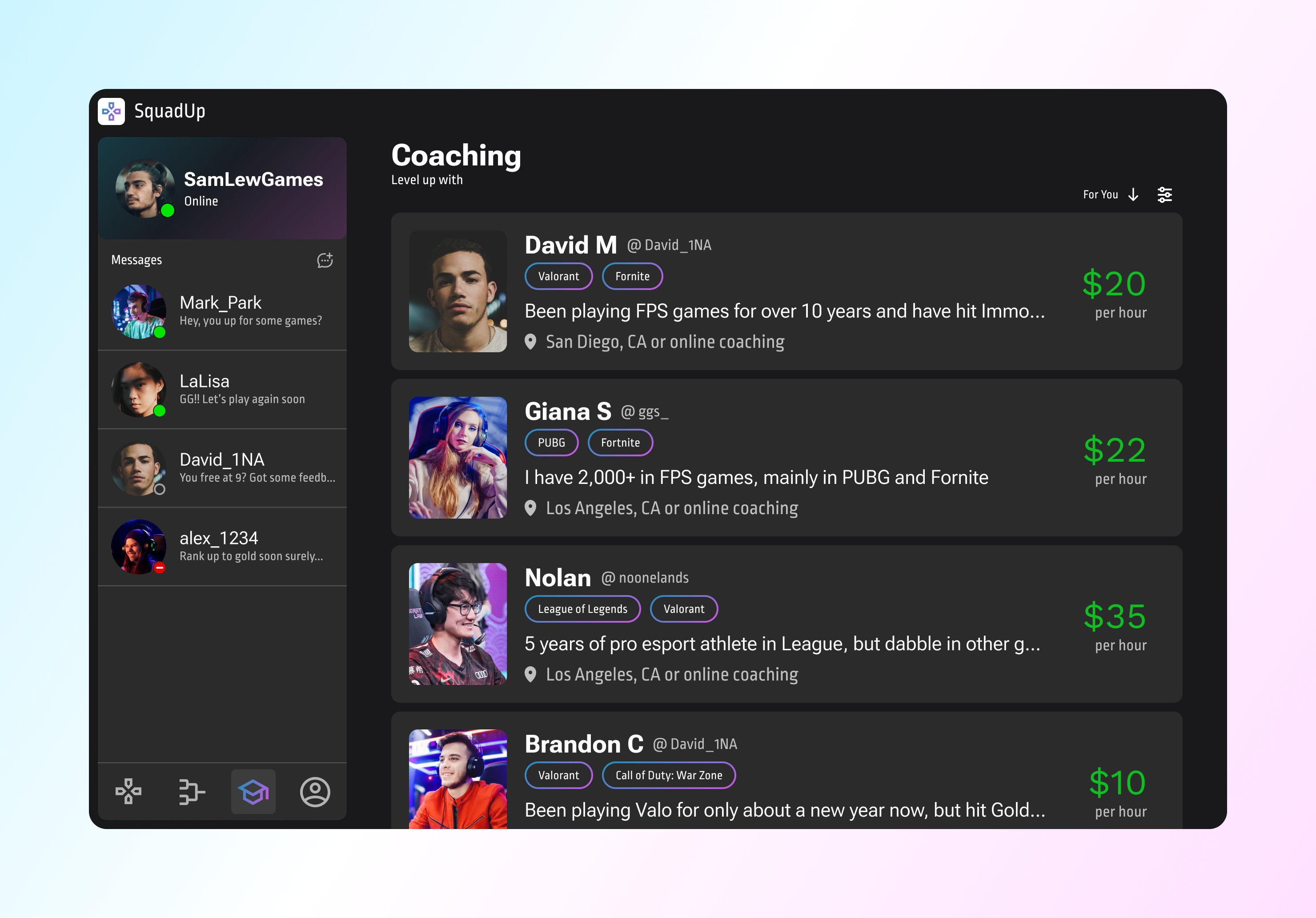
...Andddd Launch! Testing our Final

Postering and Testing @ UCSD Design Expo
On the UCSD campus, the Design and Innovation Building had just opened. Our class was invited to display our startup projects at one of the opening week events, which was a perfect opportunity for us to get live feedback on our idea and prototype. We created a poster explaining the features and goals of our startup and used Figma’s prototyping feature to test it on people stopped at our poster.
Results
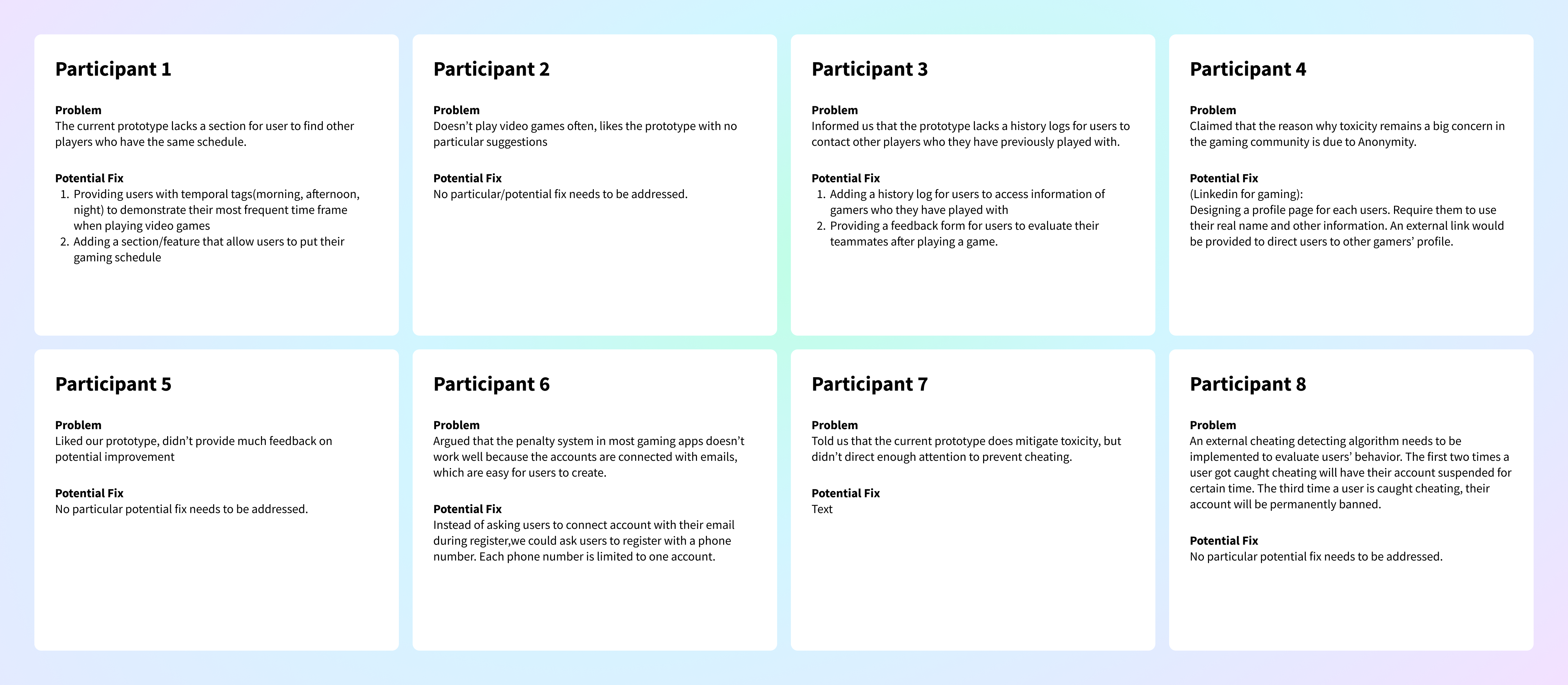
Testers suggested that the main possible reason behind toxicity in gaming could be because of anonymity. Thus, a way to fix it could be a way to verify a user's identity, like registering a phone number per account. Second, people suggested that the application can make it easier for gamers to find similar games with their teammates. Third, they reinforced the idea that there will need to be a good review system in place to weed out the players with problematic behaviors. And lastly, in order to establish a connection between previous matchups, we could incorporate a history log that keeps track of past matchups as to help those connect better with teams that they have already played with. Next steps of the project would include addressing all of these suggestions and feedback, to ensure that the application is well-rounded and successfully connects gamers of all backgrounds, interests, and experience levels.
The End? Final Thoughts
This startup class was really unique to my past projects. I learned a lot about startups and the design process while working with my teammates and the professor. I will use the skills I’ve gained through this project to help push me towards my research, design, and entrepreneurial goals. Thanks for reading!